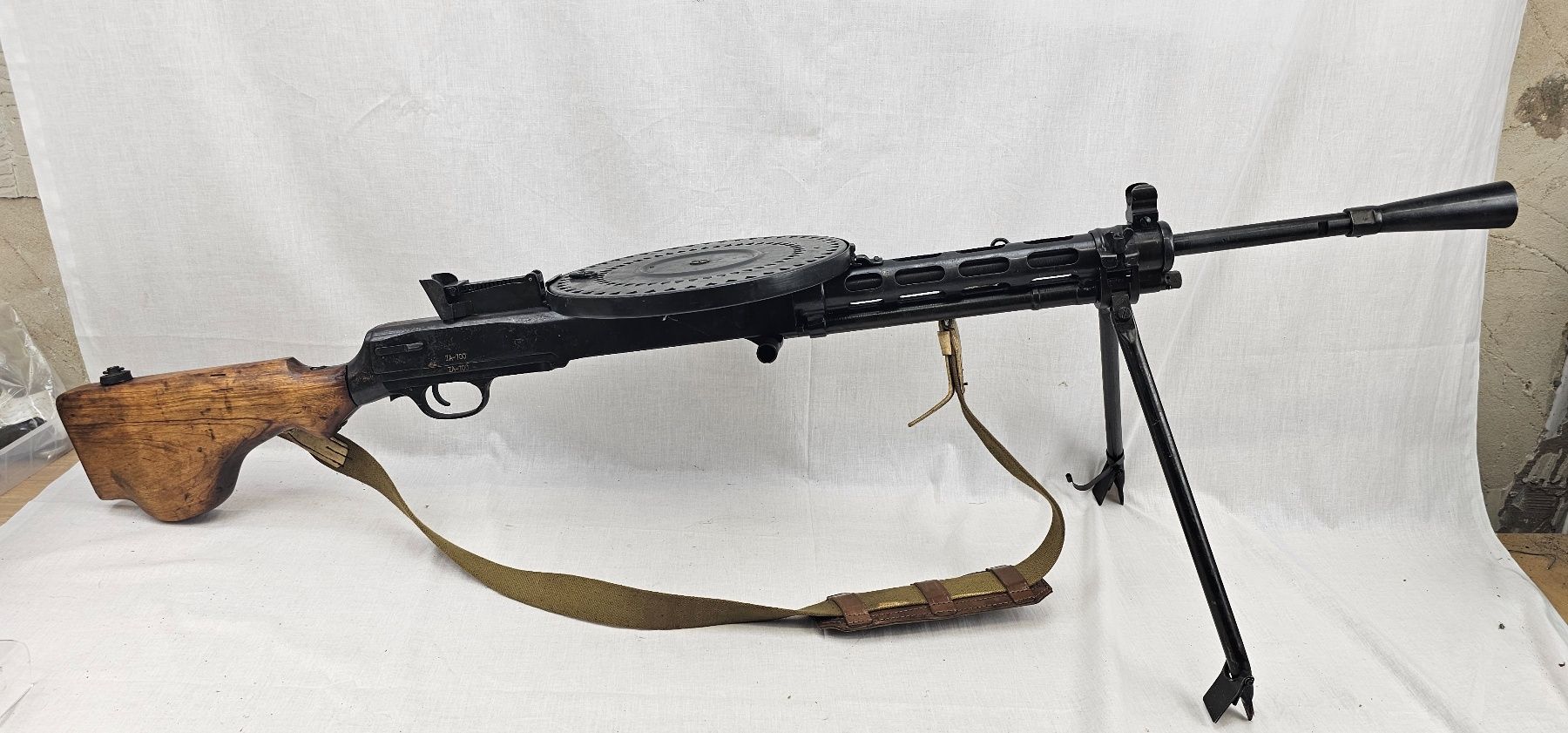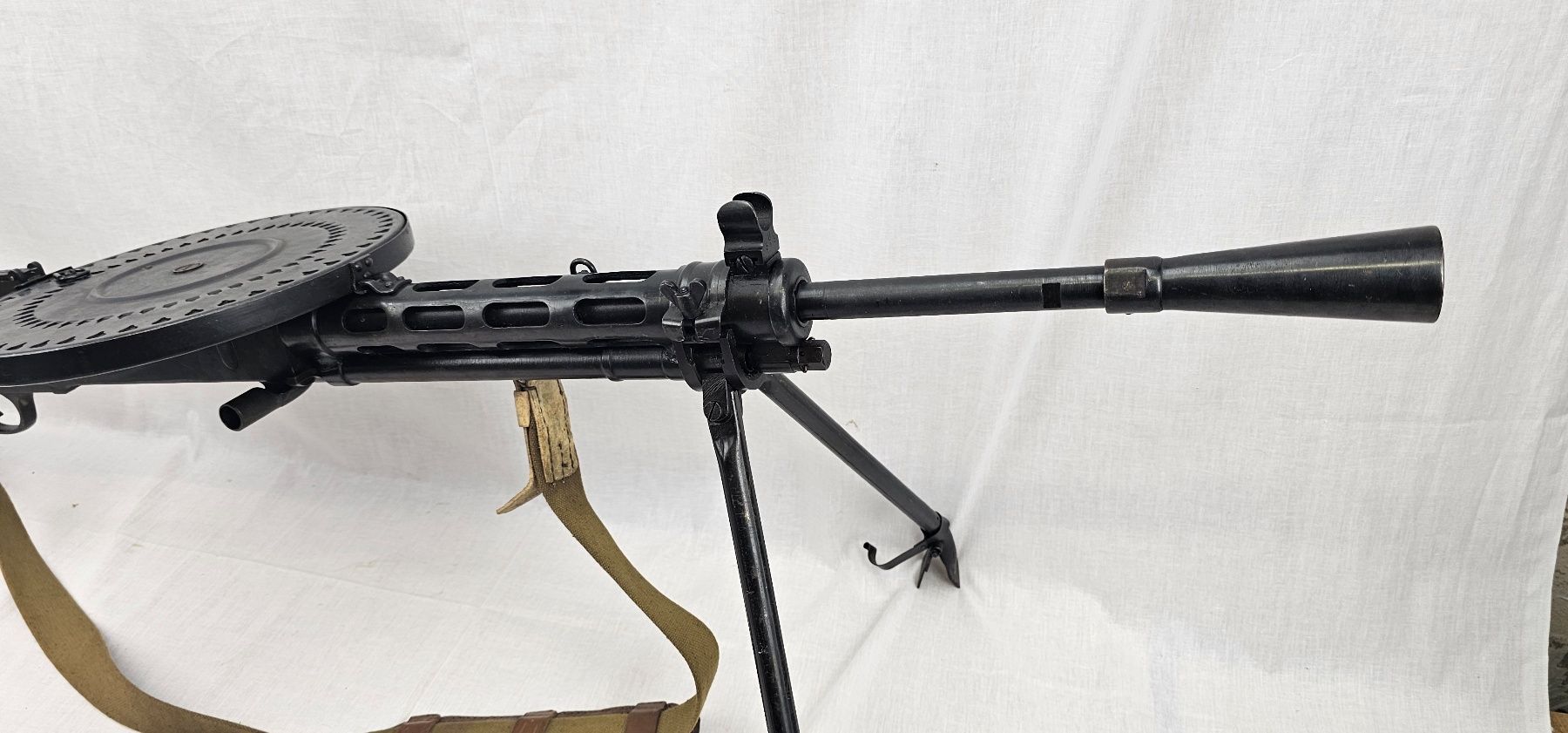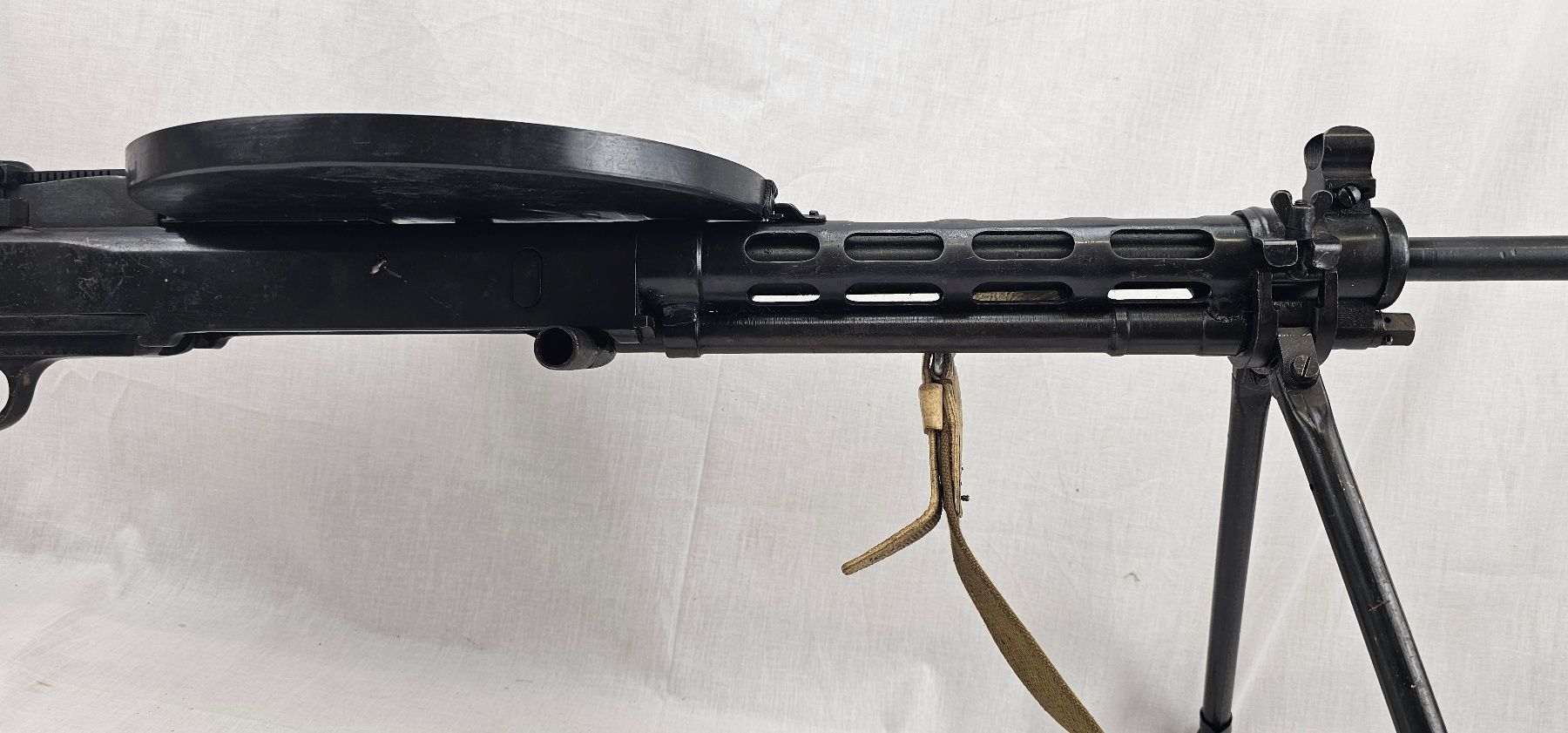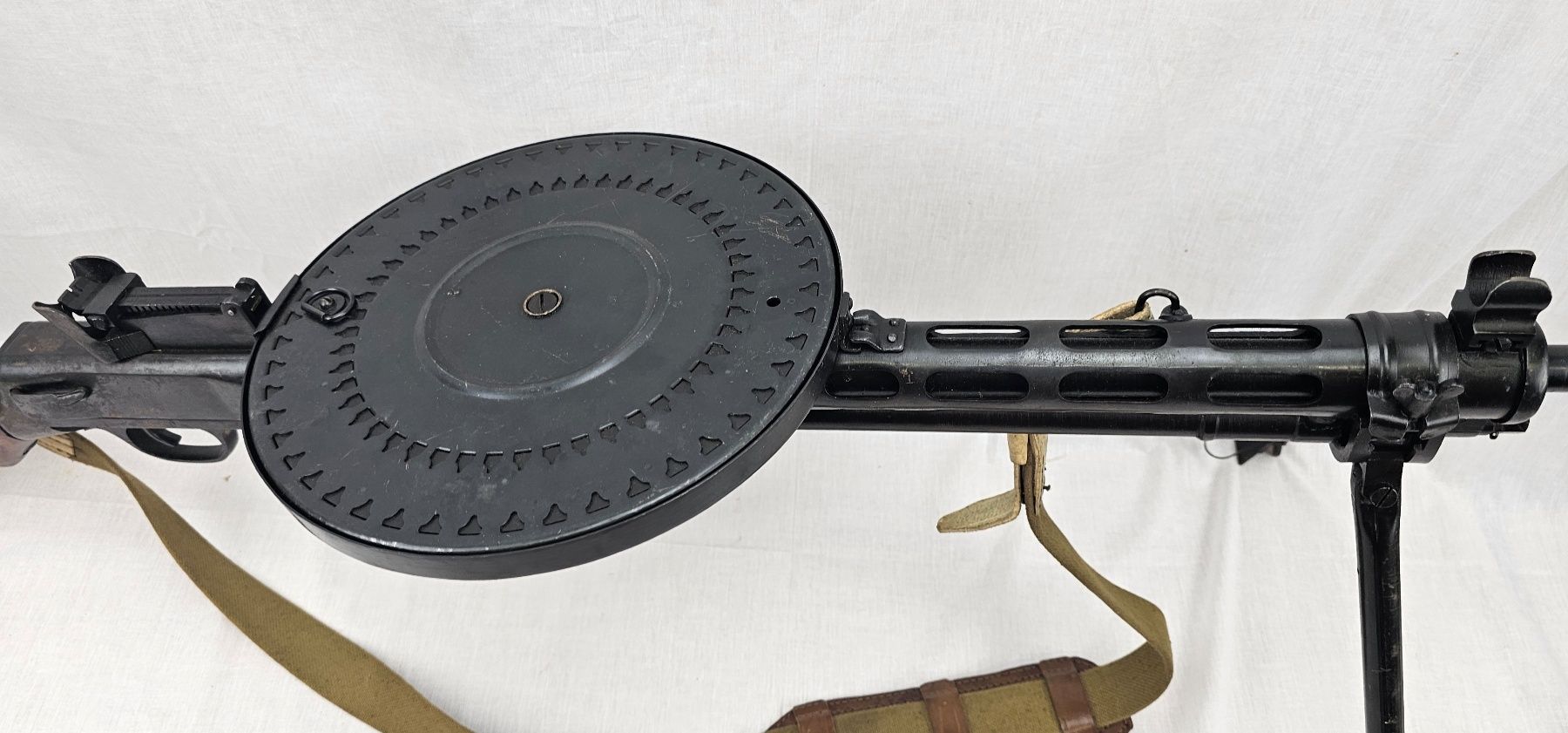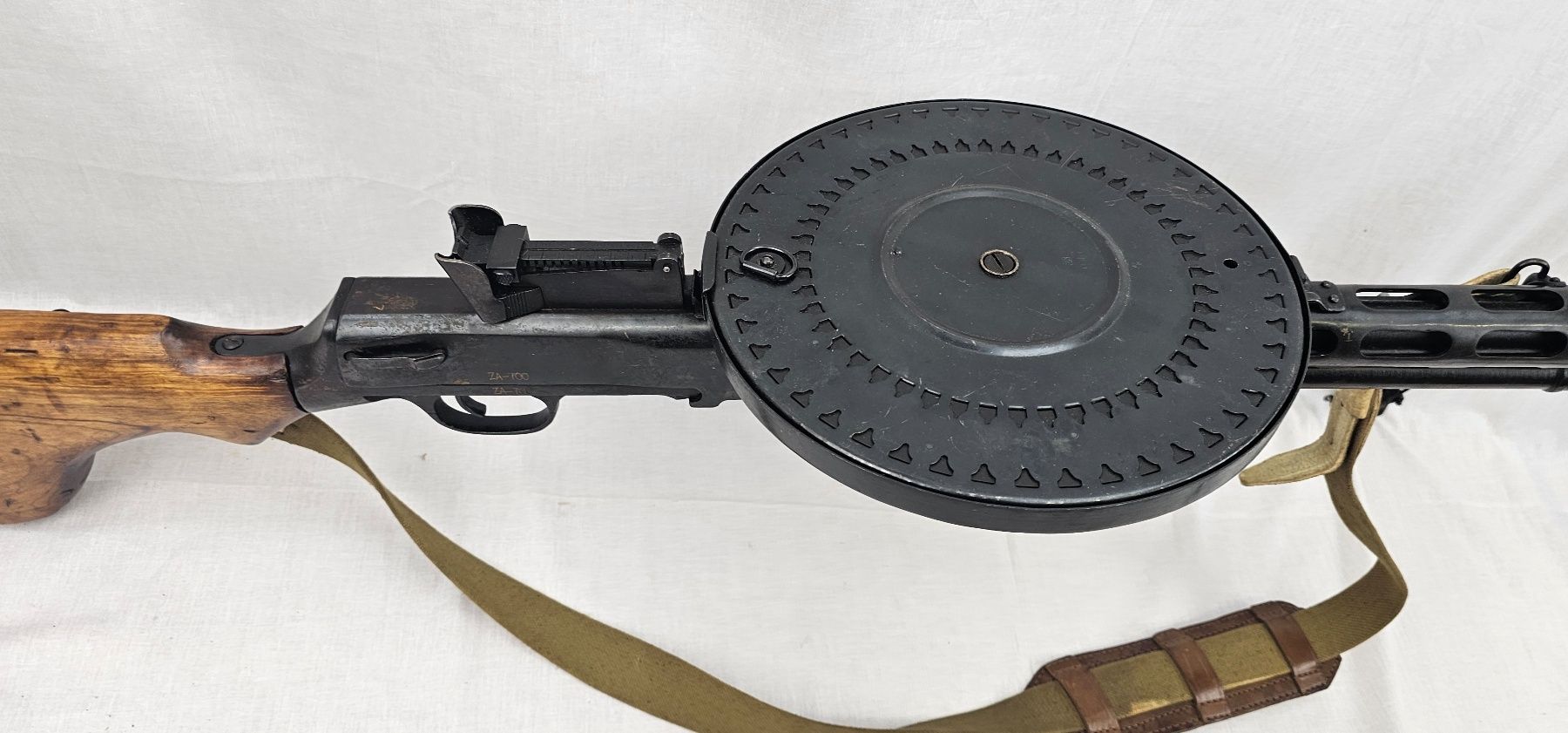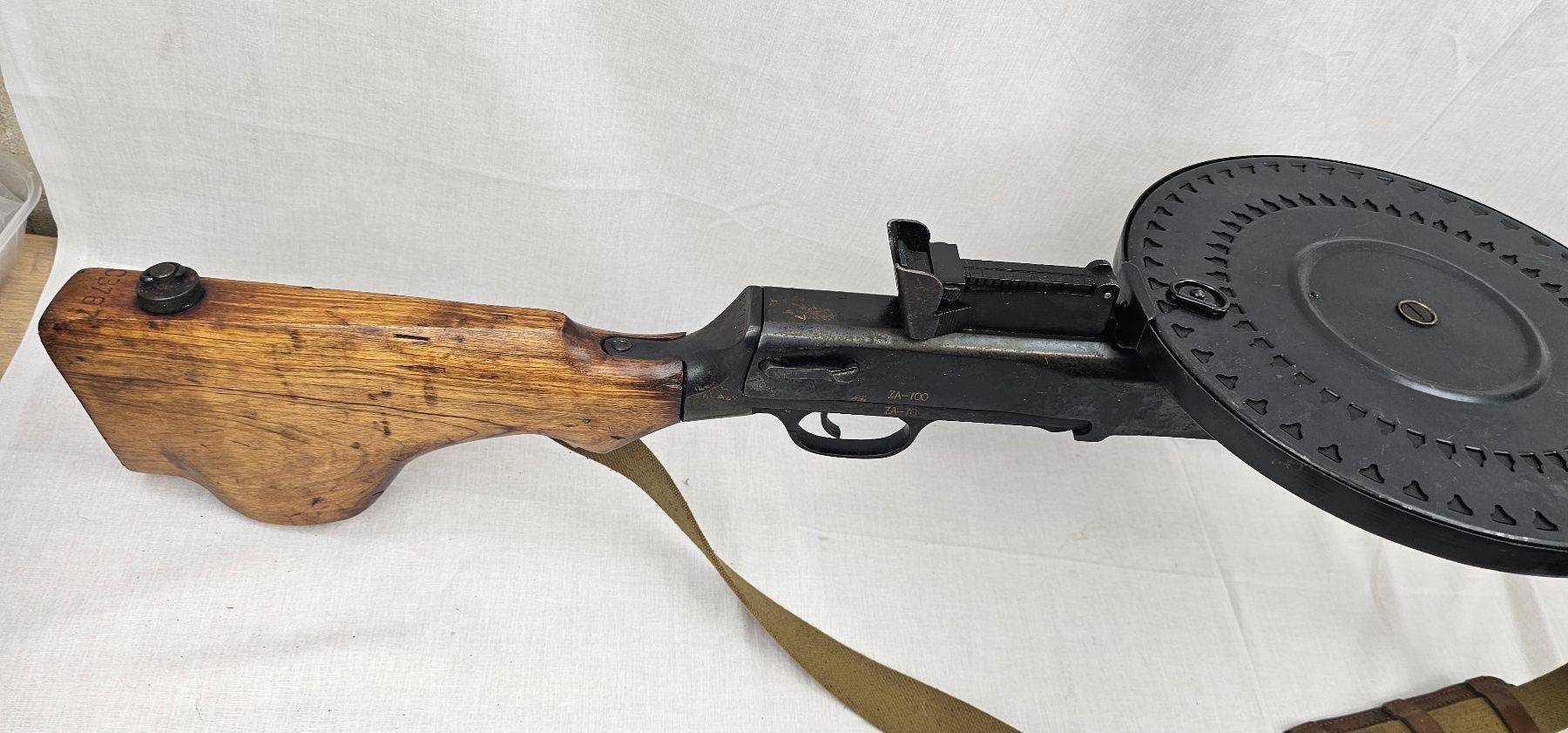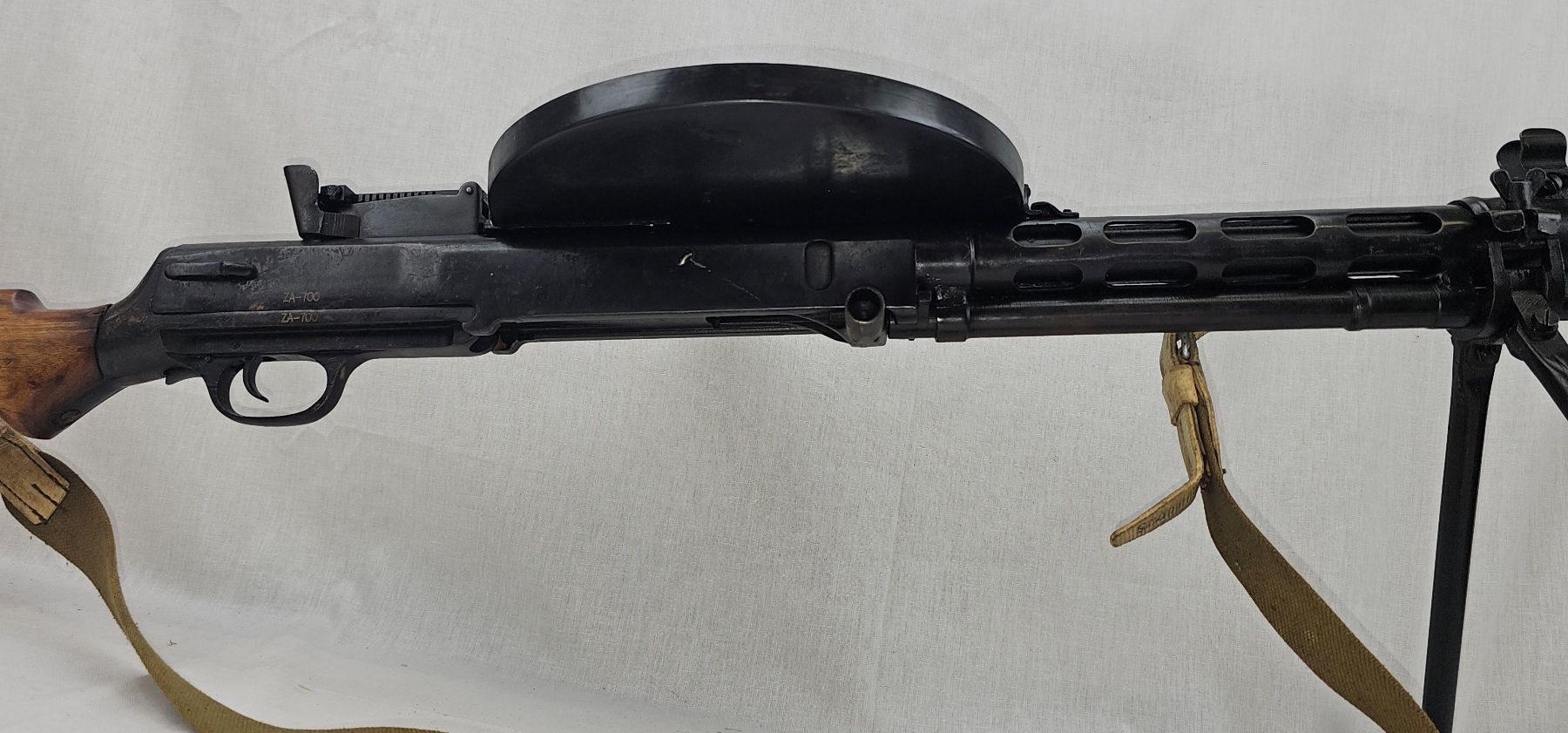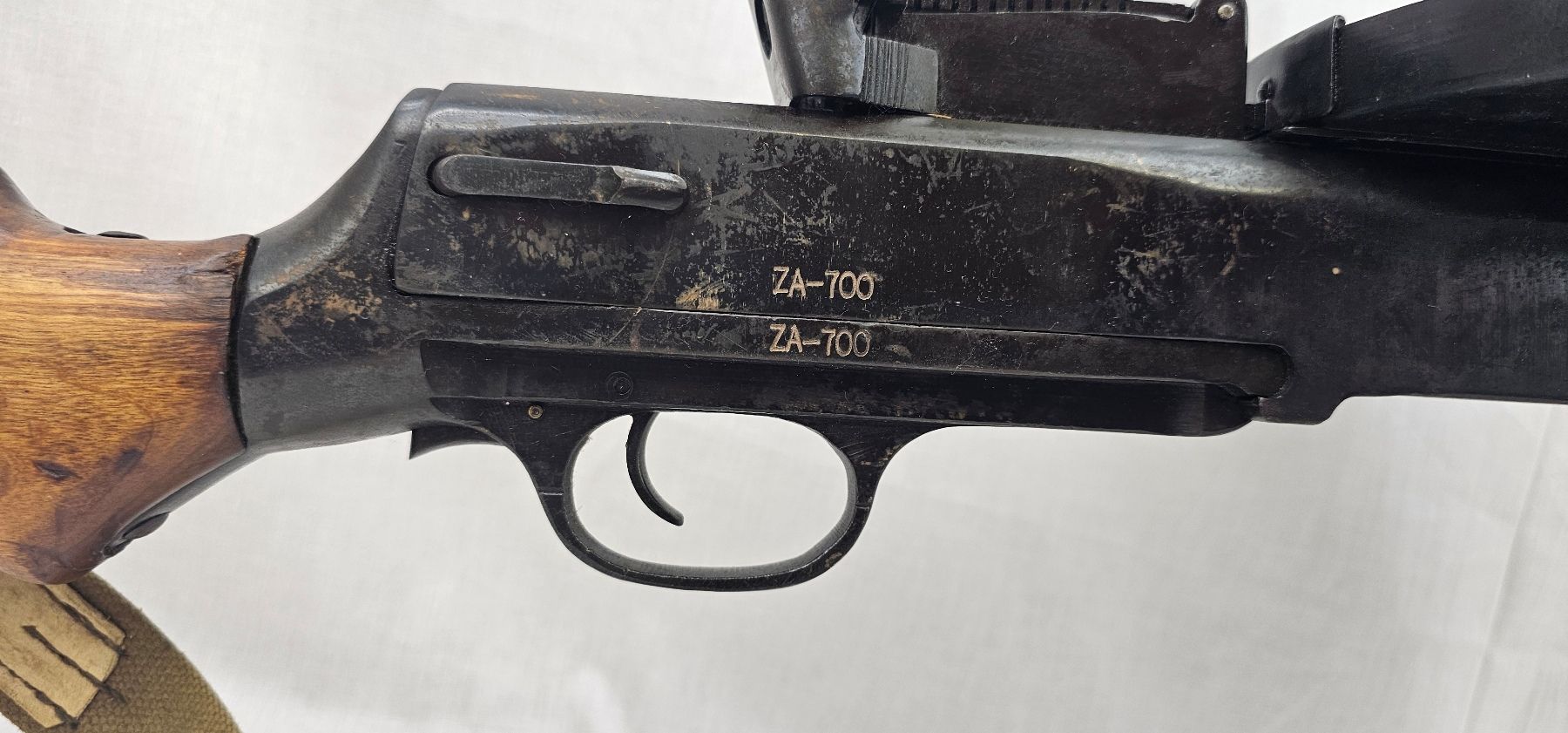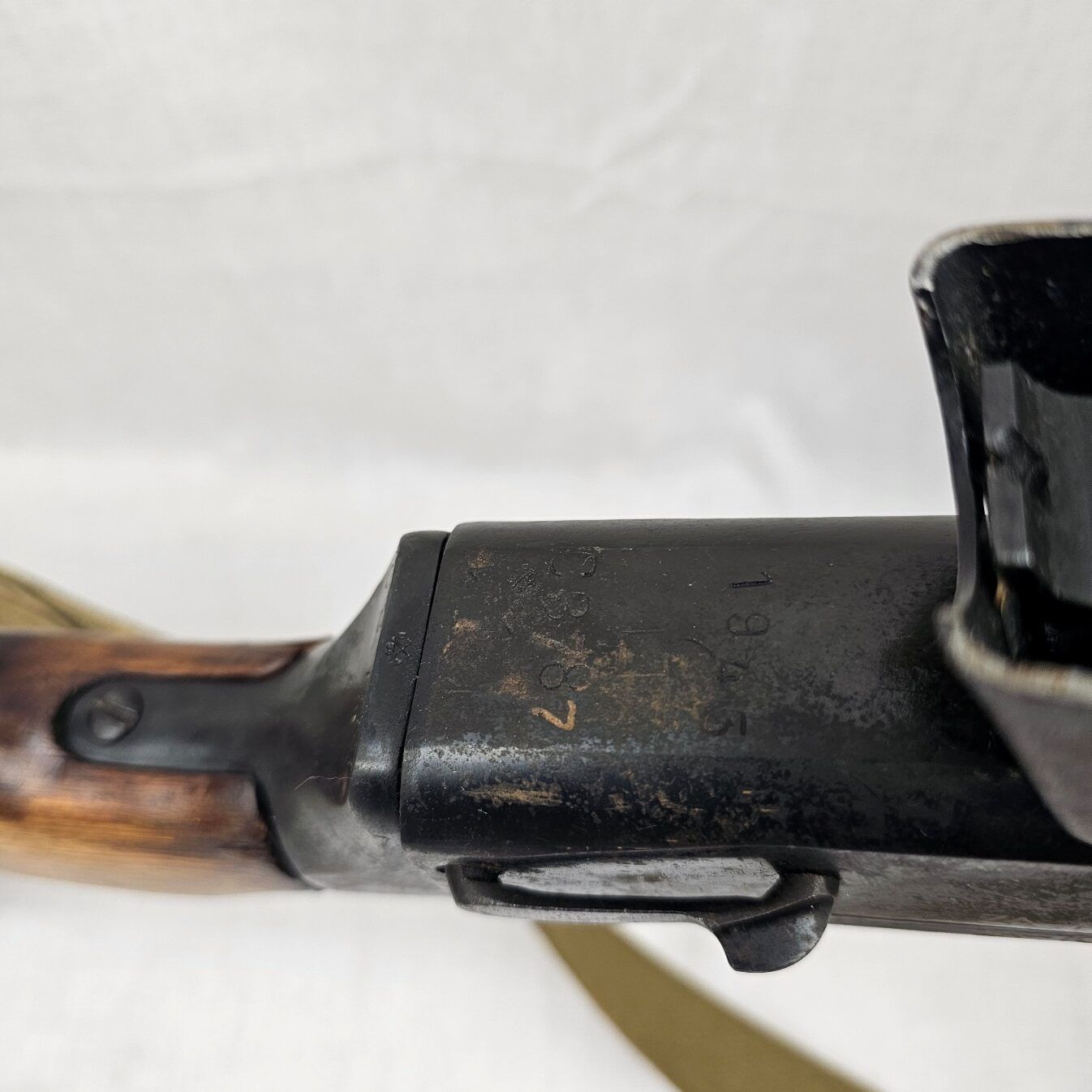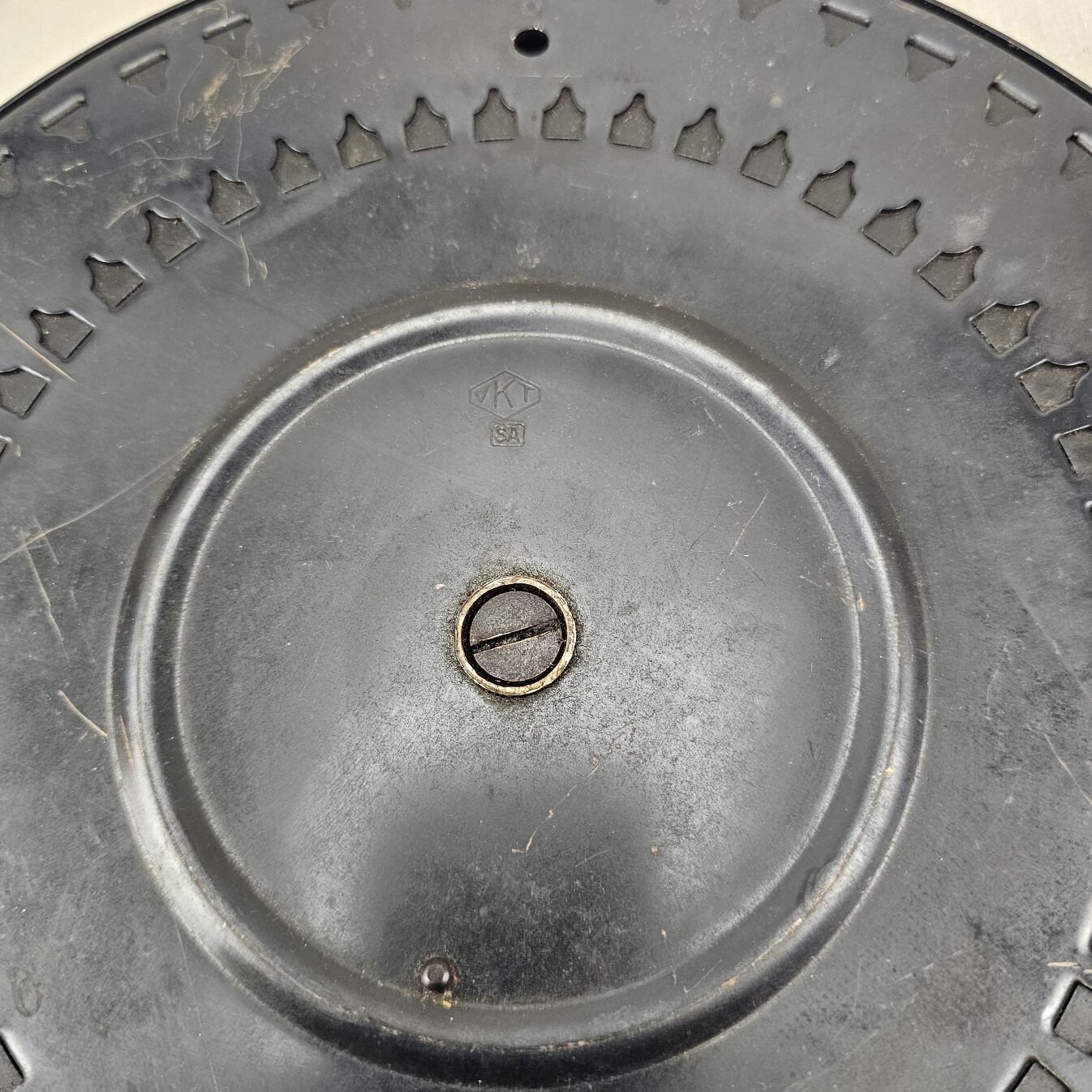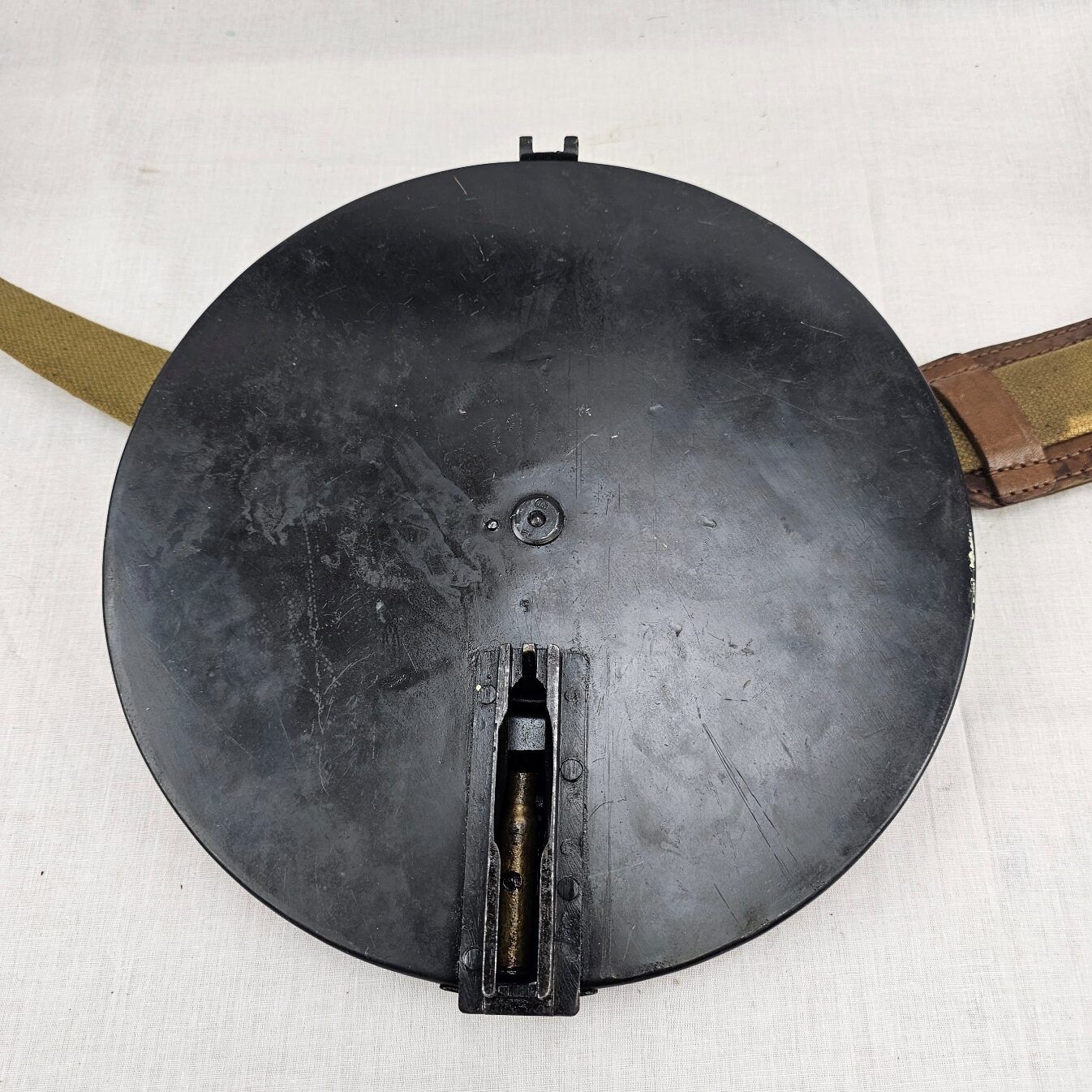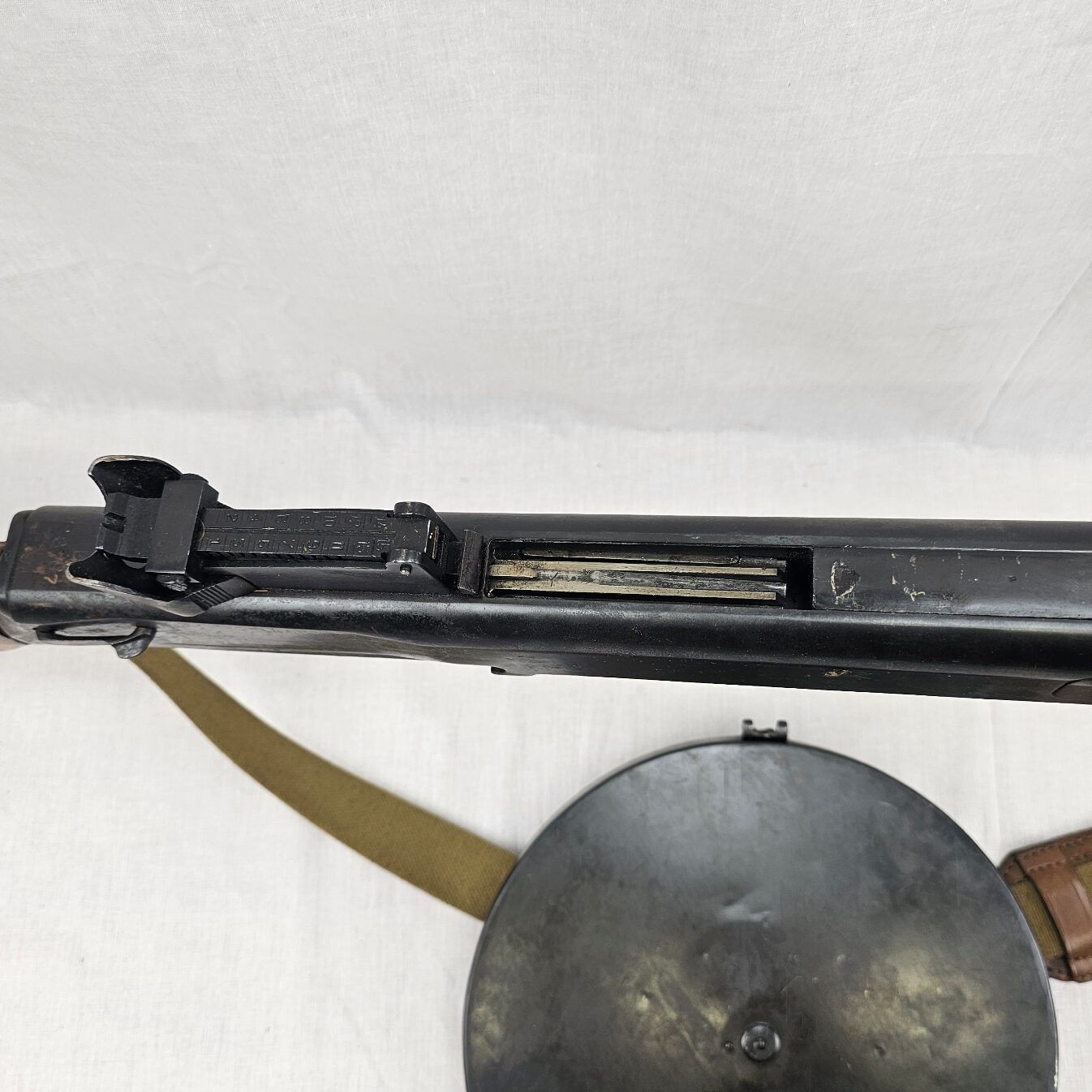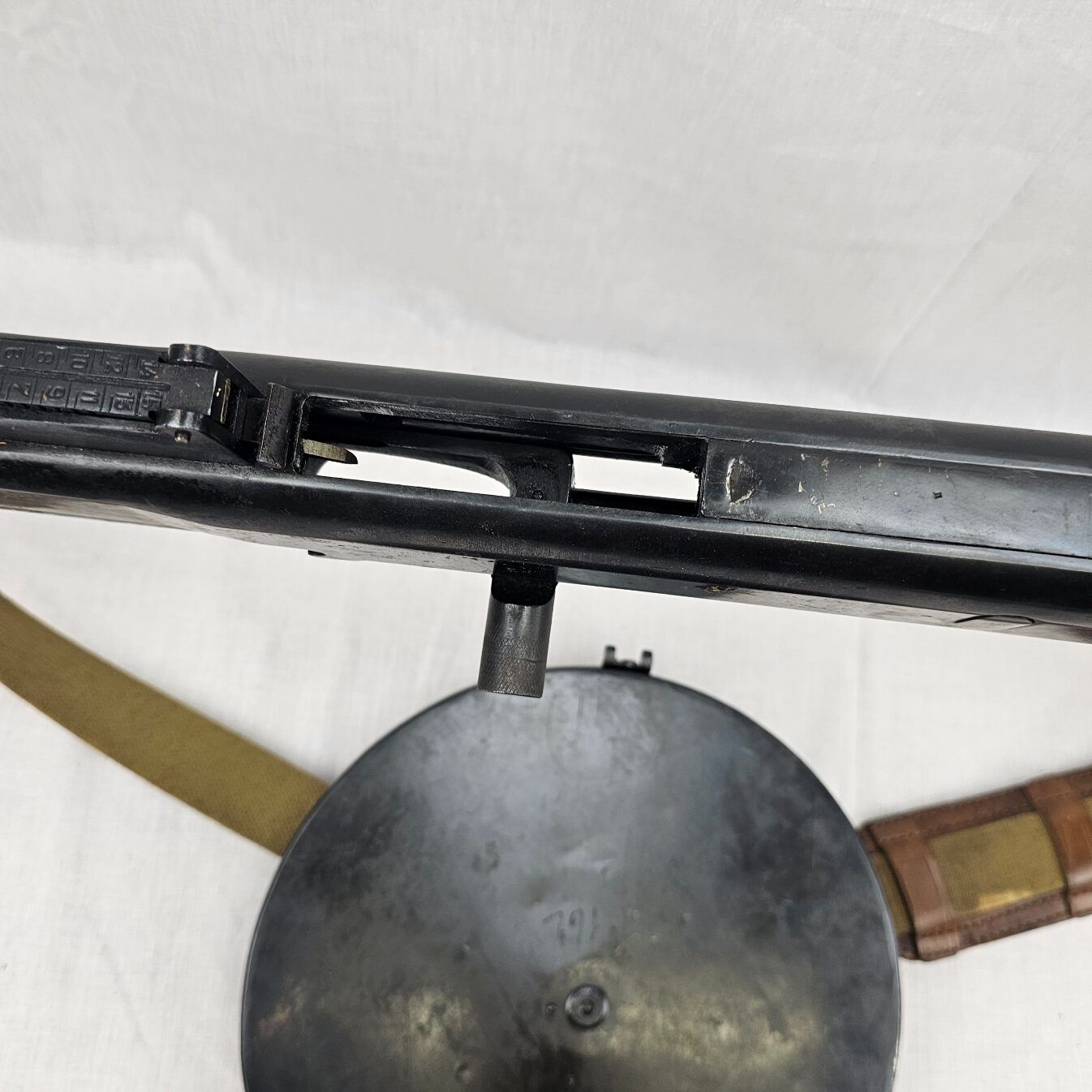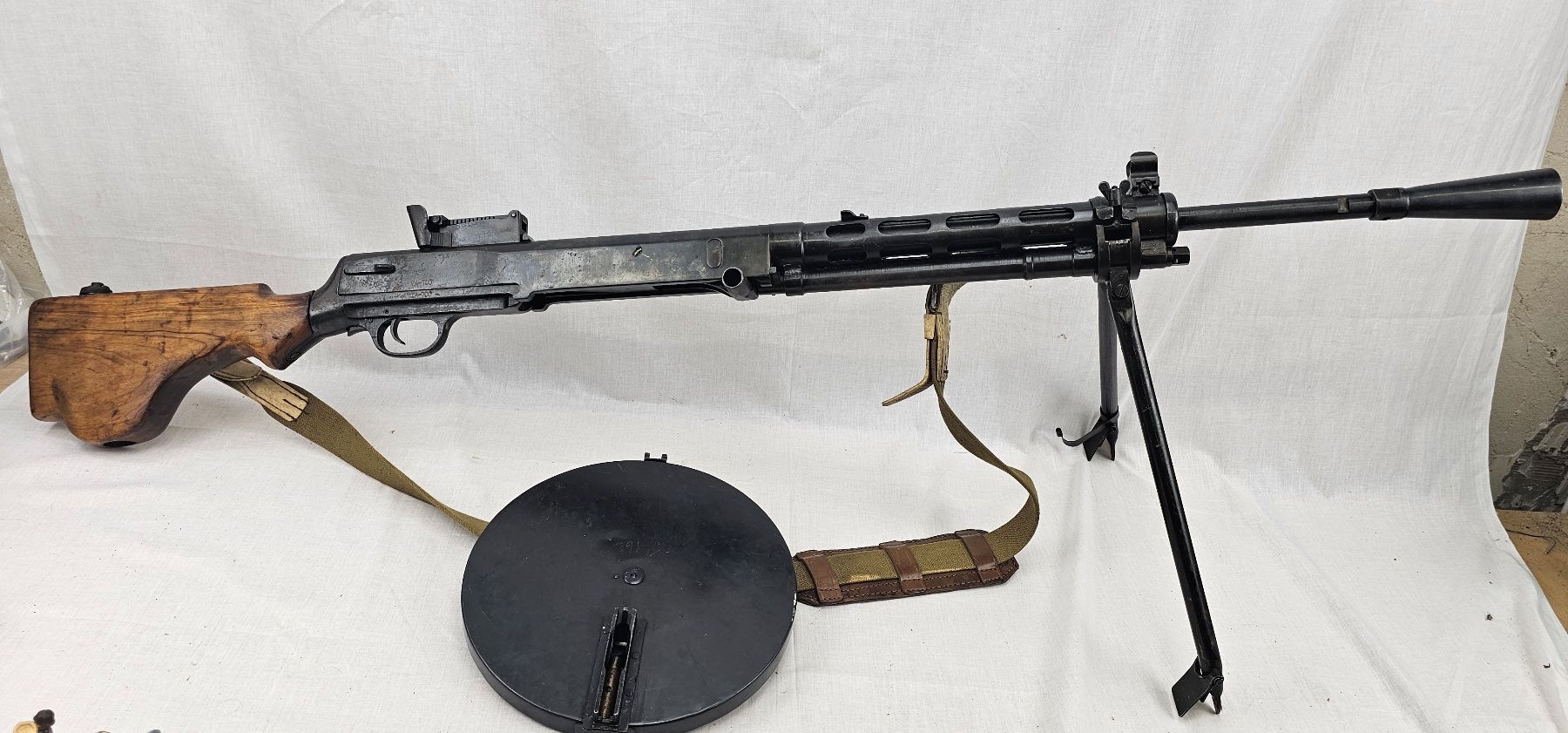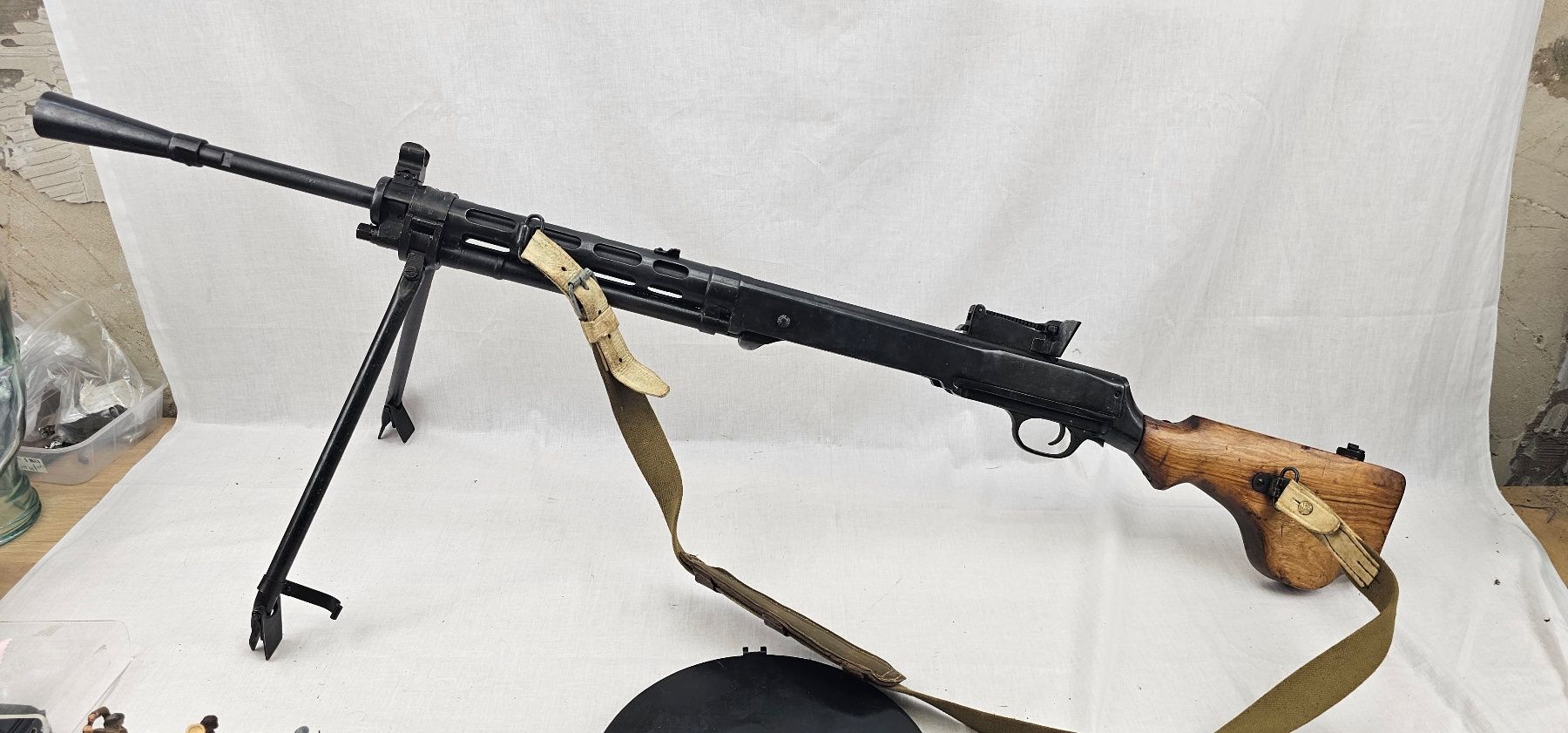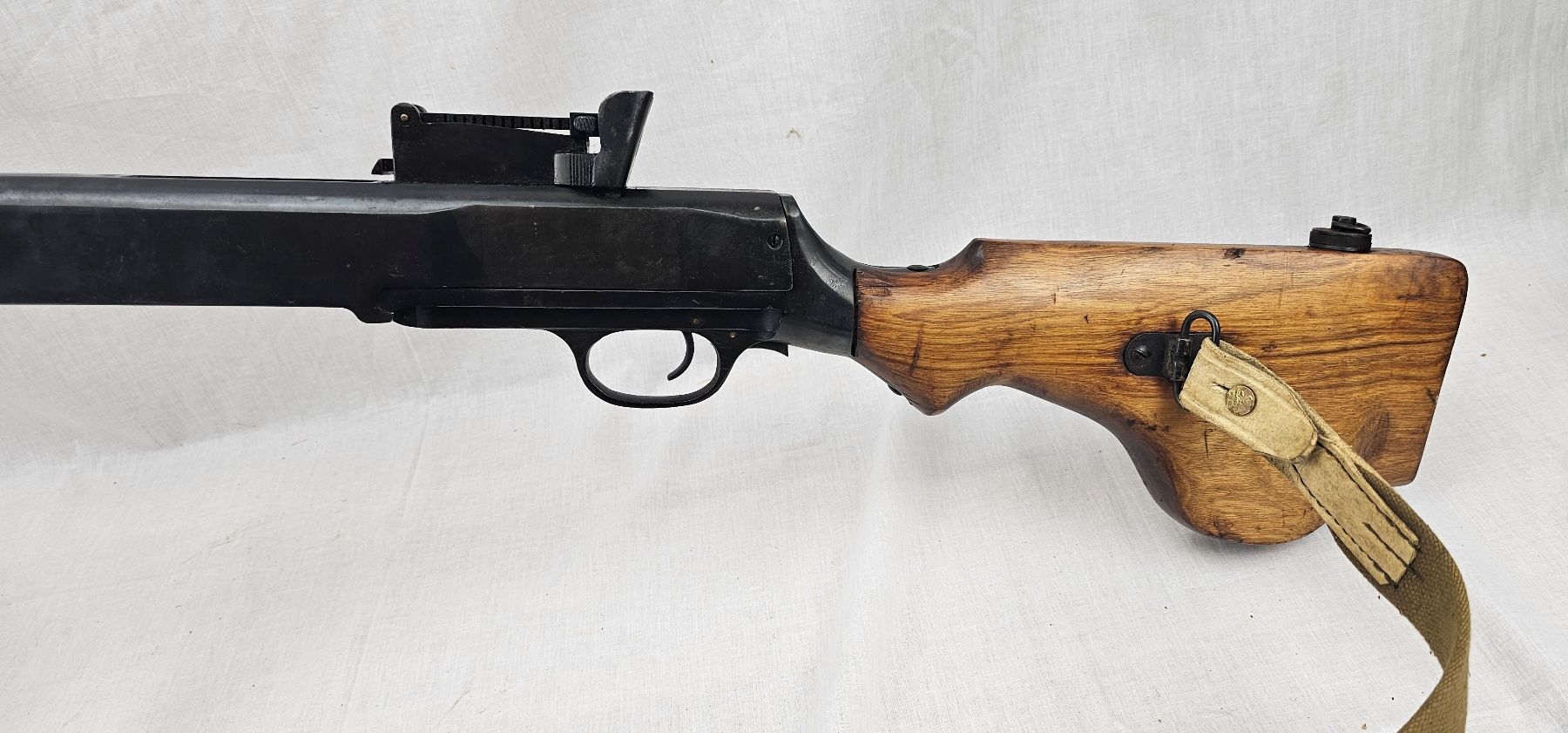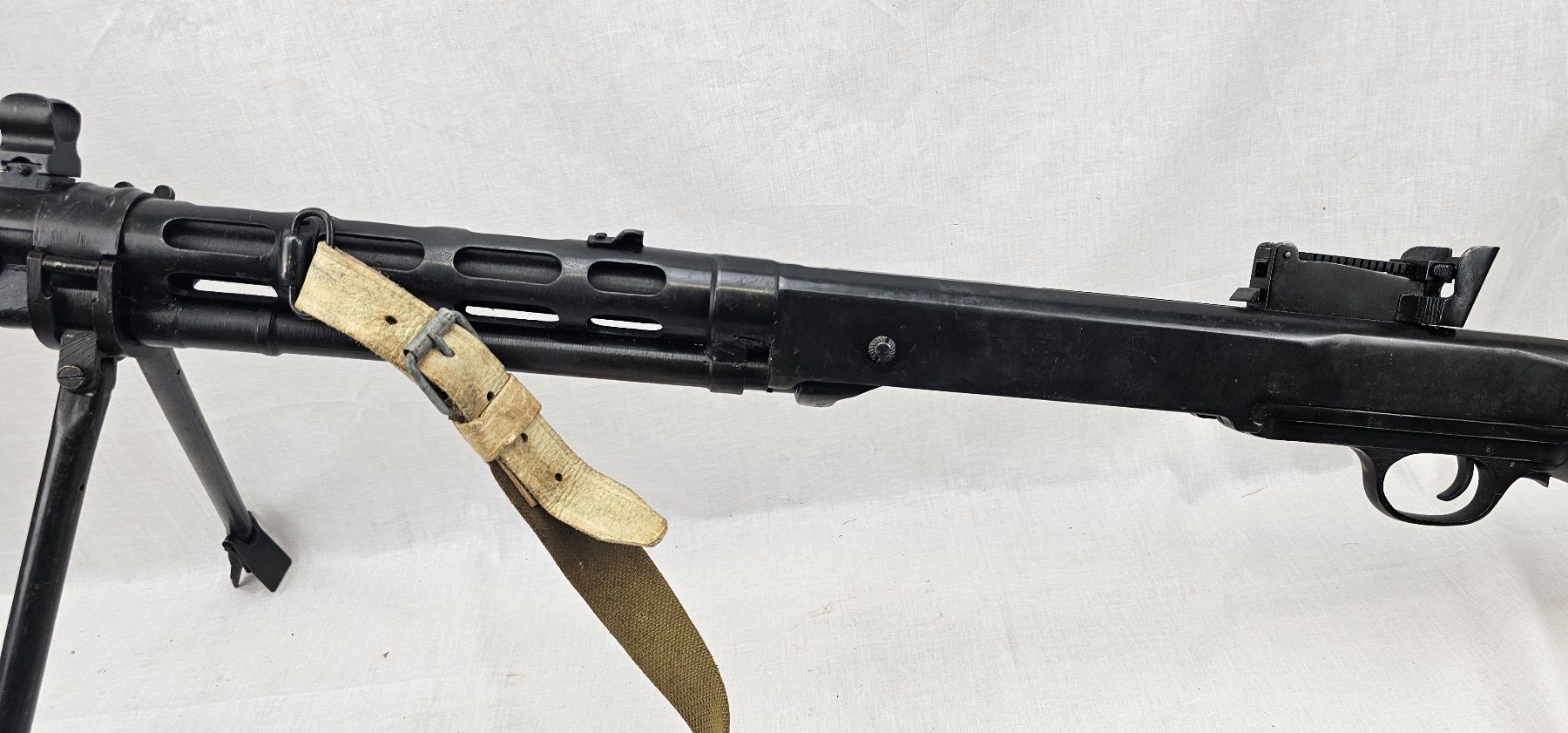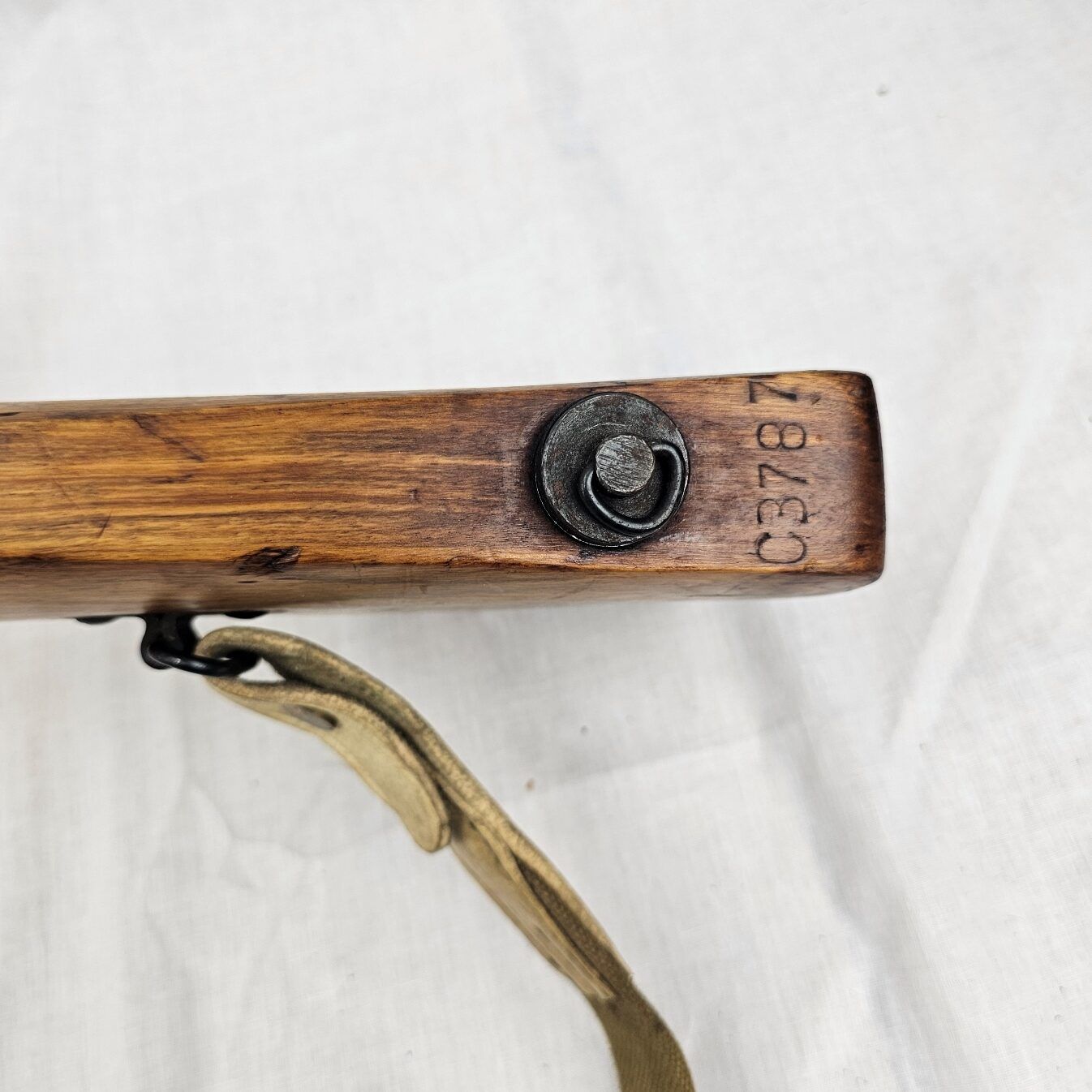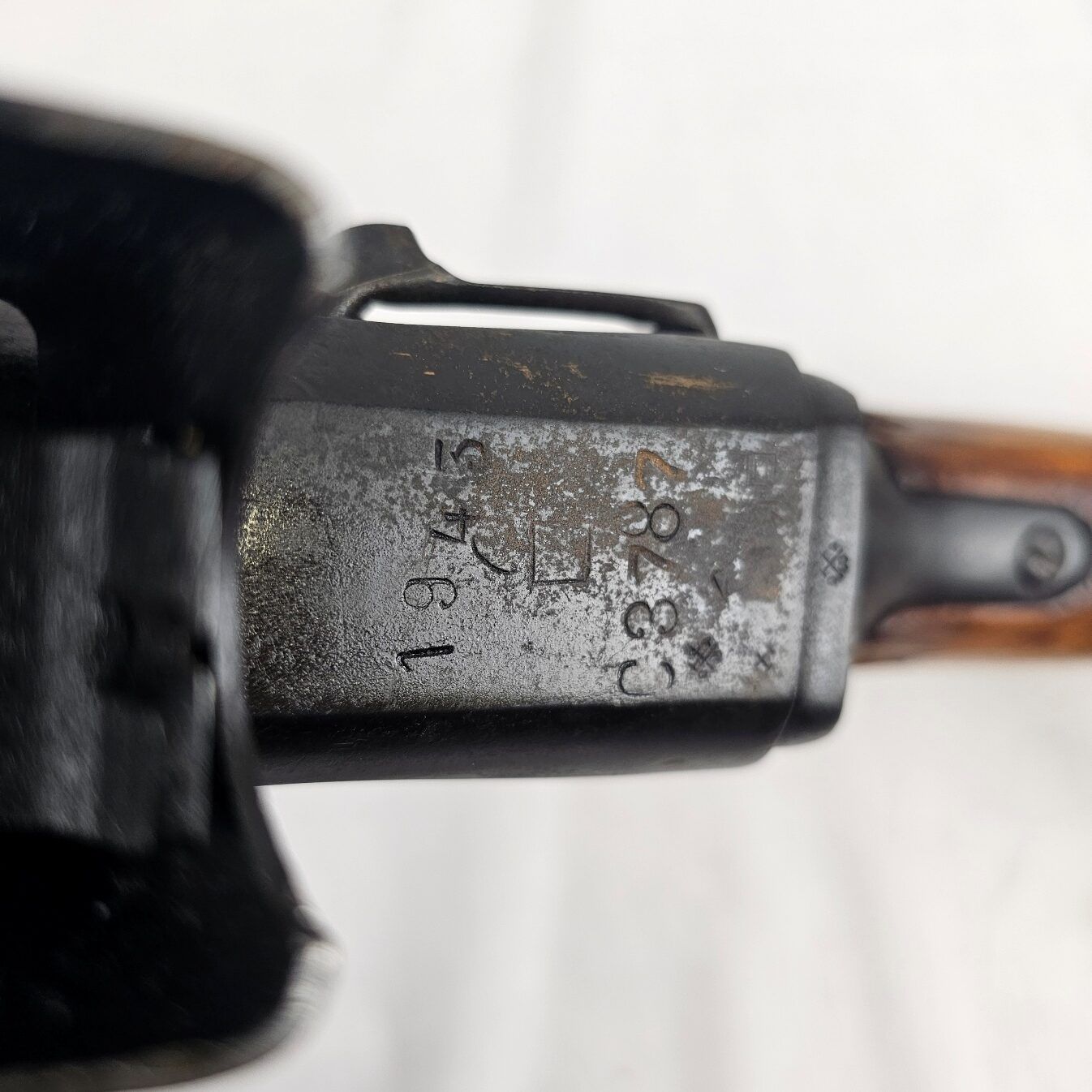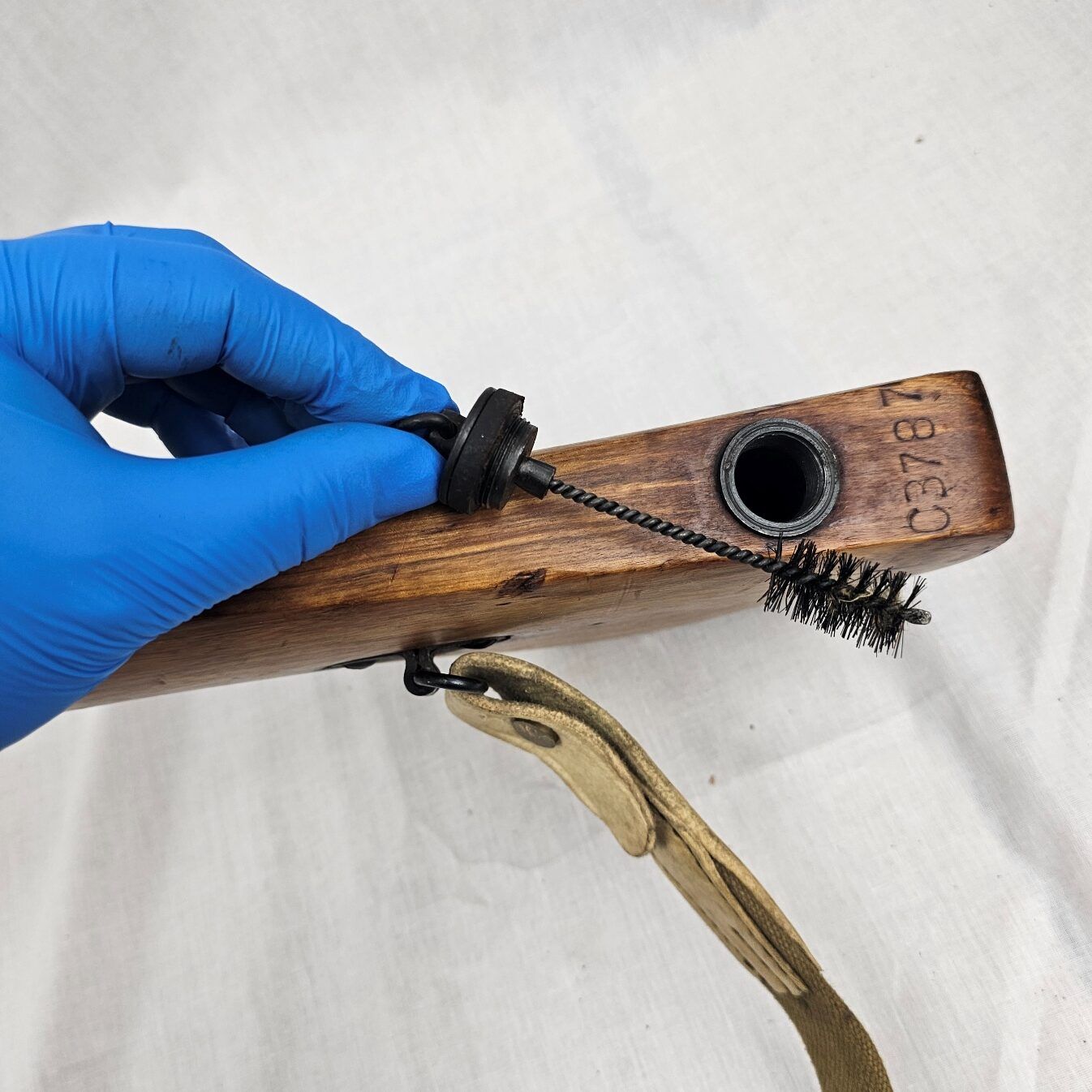~ WW2 Soviet Russia 1945 Dated DP28 Light Machine Gun Sn. C3787 – Old Spec Deactivated ~
The DP-28 (Degtyaryov Pekhotny), often called the “DP” or “Degtyaryov,” was a light machine gun (LMG) used extensively by the Soviet Red Army during World War II. Designed by Vasily Degtyaryov in the late 1920s, the DP-28 was a primary support weapon for Soviet infantry and was employed in significant battles on the Eastern Front. Its sturdy, simple design allowed it to perform reliably in the often harsh conditions of WWII, making it a crucial part of Soviet infantry arsenals.
The piece strips, cocks and dry fires. It is serial numbered C3787. The wooden stock bears the same carved number.
The right side of the frame is stamped ZA-700
Design and Features of the DP-28 LMG:
Origins and Purpose:
The DP-28 was introduced in 1928 as a replacement for the earlier, heavier Russian Maxim machine guns used during World War I.
Designed to be lighter, simpler, and more suited for the mobility of Soviet infantry, it became widely used in infantry units.
Specifications:
Caliber: 7.62x54mmR, the same cartridge used by the Mosin-Nagant rifle, which simplified ammunition logistics.
Rate of Fire: Approximately 550 rounds per minute, with a practical rate of fire of around 80-100 rounds per minute in the field to manage heat.
Magazine: Unique 47-round “pan” magazine positioned on top of the gun, which gave it a distinct, flat, circular appearance.
Weight: About 9.1 kg (20 lbs) when empty, relatively light for a machine gun but heavier than rifles of the time.
Length: Roughly 1,270 mm (50 inches), with a barrel length of 604 mm (23.8 inches).
Notable Features:
The DP-28’s top-mounted pan magazine allowed for quick reloading and kept the gun’s center of gravity low. However, it was prone to damage and could be difficult to carry due to its awkward shape.
It was operated using a gas-operated, tilting bolt mechanism, a simple and reliable system that allowed it to perform under a variety of battlefield conditions.
The gun was fitted with a large bipod for prone or fixed-position firing, helping to stabilize it during sustained fire.
A distinctive cooling barrel shroud and detachable barrel allowed for easier maintenance and heat management, which was critical in prolonged engagements.
Usage and Role in WWII:
The DP-28 served as the standard LMG for Soviet infantry throughout WWII. Its manageable rate of fire and relatively portable weight allowed it to provide effective suppressive fire without overwhelming logistics.
It was used in various roles, from providing covering fire in urban and trench warfare to serving as a defensive position weapon against German forces.
Although not as fast-firing or heavy as German MG34 or MG42 machine guns, the DP-28’s reliability and simplicity made it invaluable in Eastern Front conditions.
Limitations and Drawbacks:
The DP-28’s pan magazine was more cumbersome and slower to reload compared to belt-fed systems, limiting sustained fire capability.
Due to its relatively low rate of fire compared to its German counterparts, it required the support of riflemen to maintain effective firepower during engagements.
End of Service and Variants:
By the end of WWII, around 795,000 DP-28s had been produced. In 1945, production of the DP-28 continued, with minor improvements leading to variants like the DPM with an improved recoil spring and bipod placement.
After WWII, the DP-28 continued in service and was eventually replaced by the more modern RPD light machine gun in the 1950s, though it continued to be used by many Soviet allies.
Historical Significance:
The DP-28 became symbolic of the Soviet infantry’s resilience on the Eastern Front and represented a shift in Soviet tactics towards more mobile, fire-support-based squad compositions.
Its design influenced future Soviet machine guns, and it played a role in post-WWII conflicts in Asia, Africa, and the Middle East.


